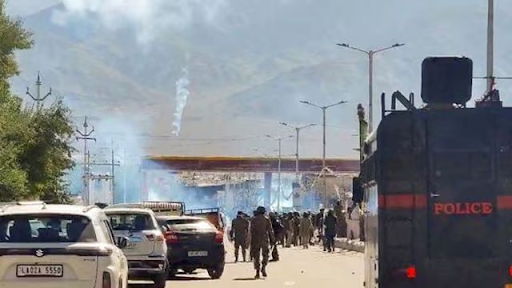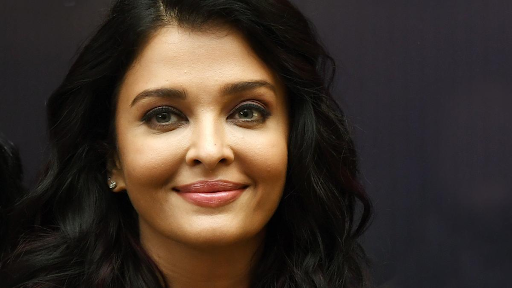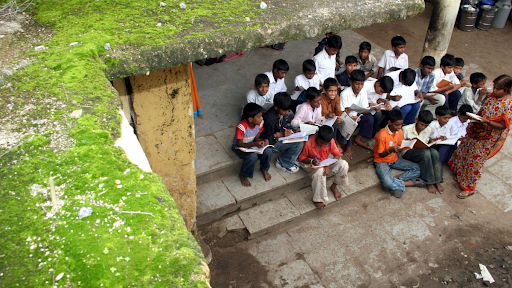





Copyright infringement not intended
Picture Courtesy: https://www.livelaw.in/top-stories/madrasas-unsuitable-for-proper-education-have-arbitrary-mode-of-working-ncpcr-tells-supreme-court-269280
The National Commission for Protection of Child Rights (NCPCR) has filed a petition in the Supreme Court regarding concerns about the quality of education in Madrasas.
|
About The National Commission for Protection of Child Rights (NCPCR) It is a statutory organisation established under the Commissions for Protection of Child Rights Act, 2005. It reports to the Ministry of Women and Child Development. It ensures that all laws, policies, initiatives, and administrative processes comply with the child rights perspective expressed in the Indian Constitution and the UN Convention on the Rights of the Child. It provides a forum for addressing issues related to child rights violations. Its online complaint registration system, eBaalNidaan, allows the public to report child rights breaches. It consists of a chairperson and six members, at least two women. The Central Government appoints members. |
A madrasa is an educational institution. "Madrasa" comes from Arabic and was formerly associated with religious instruction. Historically, mosques acted as educational facilities. By the tenth century, madrasas had evolved into autonomous institutions providing religious and secular education. Some of these institutions also accommodated students.
According to the Ministry of Minority Affairs, there are approximately 38,000 madrasas, of which around 28,107 are recognised. Uttar Pradesh has the most madrasas, almost 60% of the total in the country.
|
Current Legal Challenge The Supreme Court hearing a case on madrasa education after the National Commission for the Protection of Child Rights (NCPCR) expressed concerns. According to the NCPCR, madrasa education is not comprehensive and violates the Right to Education Act. The NCPCR has argued that madrasas emphasise too much on Islamic education at the expense of a well-rounded curriculum. There are concerns that this may marginalise madrasa students in terms of employment and social integration. The appeal came after the Allahabad High Court declared the Uttar Pradesh Board of Madarsa Education Act 2004 unconstitutional, claiming it violated the principle of secularism under Article 14 of the Indian Constitution. |
Madrasa Darse Nizami: These are run as public charities and are not obligated to follow the state school curriculum. Arabic, Urdu, and Persian are the principal languages used for instruction.
Madrasa Darse Aliya: These madrasas are associated with state madrasa education boards and frequently follow the curriculum established by the National Council of Educational Research and Training (NCERT), which includes secular topics such as Mathematics, Science, Hindi, and English.
Madrasas provide four levels of education, matching the mainstream school system: Maulvi (Class 10), Alim (Class 12), Kamil (Bachelor's degree), and Fazil (Master's degree).
Most recognised madrasas follow NCERT norms and offer secular subjects and Islamic education. In some places, students can choose Deeniyat (religious studies) or Sanskrit as an optional course.
More than 20 states have their madrasa boards regulated by the state governments; they appoint teachers and staff for recognised madrasas. Unrecognised madrasas follow the curriculum of larger Islamic schools like Darul Uloom Deoband and Nadwatul Ulama.
State governments provide the majority of the funding for madrasas. The central government also has initiatives like the Scheme for Providing Education to Madrasas/Minorities (SPEMM), which includes two sub-schemes.
The Scheme for Providing Quality Education in Madrasas (SPQEM) aims to improve educational quality.
Infrastructure Development for Minority Institutes (IDMI) provides infrastructure support to minority institutions. In April 2021, this project was transferred from the Ministry of Minority Affairs to the Ministry of Education.
Constitutional ProvisionsArticle 29 protects minorities' interests by allowing them to preserve their culture, language, and script. It ensures that every community with a unique language, script, or culture has the right to maintain it. Article 30 gives minorities the right to establish and run educational institutions. It also ensures that the state does not discriminate against minority-managed educational institutions when granting funding. The Right to Education (RTE) Act 2009 guarantees free and compulsory education for children aged 6 to 14. While madrasas provide education, there has been discussion over their compliance with the RTE Act, particularly regarding the education they provide. |
Since the early centuries of Islam, madrasas have been vital parts of Islamic education. They served as schools of religious and secular learning.
Madrasas educate a large number of children and provide a mix of religious and secular instruction. In many locations, they are the only or sole source of education for economically underprivileged children.
Madrasas provide social services like healthcare, vocational training, and orphan care and serve as educational institutions. They are essential in maintaining the community's cultural and religious heritage.
Many madrasas need more qualified teachers, adequate facilities, and up-to-date educational resources. A tilted curriculum toward religious studies and an insufficient focus on secular subjects might result.
Adopting standardised curricula and modern teaching methods is frequently met with resistance. This limits madrasa students' study opportunities or participation in the job market.
Many madrasas need more funds. Some receive government financing, while others depend on community donations. Financial instability can impact the quality of education and the ability to offer necessary facilities and supplies.
Madrasas frequently suffer from negative perceptions and prejudices, particularly regarding security concerns. This might result in stigma and bias against madrasa students and graduates.
To improve the quality of education, madrasas must implement a balanced curriculum that covers both religious and secular courses. Integrating the National Council of Educational Research and Training (NCERT) curriculum can ensure children receive a comprehensive education.
Investing in teacher training programs to improve the overall quality of teaching at Madrasa, teachers must have current teaching skills and knowledge of religious and secular subjects.
Improving madrasa infrastructure is critical. This includes providing appropriate classrooms, libraries, laboratories, and other amenities required for a positive learning environment. Increased government and community support can help to address funding challenges.
Promoting awareness about madrasas' role and contributions is significant. Awareness campaigns and advocacy initiatives can help dispel misconceptions and emphasise madrasas' positive impact on education and community development.
Regular monitoring and evaluation of madrasas can guarantee that they meet educational requirements and deliver high-quality education. This can include establishing accrediting systems and conducting performance assessments.
Although madrasas have historically played an essential role in educating Muslim populations, their future relevance will be determined by their ability to balance Islamic and secular education.
Must Read Articles:
SECTION 12(1)(C) OF THE RIGHT OF CHILDREN TO FREE AND COMPULSORY EDUCATION ACT, 2009
STATE OF ELEMENTARY EDUCATION IN RURAL INDIA REPORT
GLOBAL EDUCATION MONITORING REPORT, 2023
NATIONAL COMMISSION FOR PROTECTION OF CHILD RIGHTS (NCPCR)
Source:
|
PRACTICE QUESTION Q.How do societal perceptions and stereotypes about madrasas affect their integration with the mainstream education system, and what strategies can be employed to improve their image and acceptance? (250 Words) |






© 2025 iasgyan. All right reserved